Abstract
This article provides a framework for the design of future eradication programmes so that the greatest benefit accrues to health systems development from the implementation of such programmes. The framework focuses on weak and fragile health systems and assumes that eradication leads to the cessation of the intervention required to eradicate the disease. Five major components of health systems are identified and key elements which are of particular relevance to eradication initiatives are defined. The dearth of documentation which can provide "lessons learned" in this area is illustrated with a brief review of the literature. Opportunities and threats, which can be addressed during the design of eradication programmes, are described and a number of recommendations are outlined. It is emphasized that this framework pertains to eradication programmes but may be useful in attempts to coordinate vertical and horizontal disease control activities for maximum mutual benefits.
Full text
PDF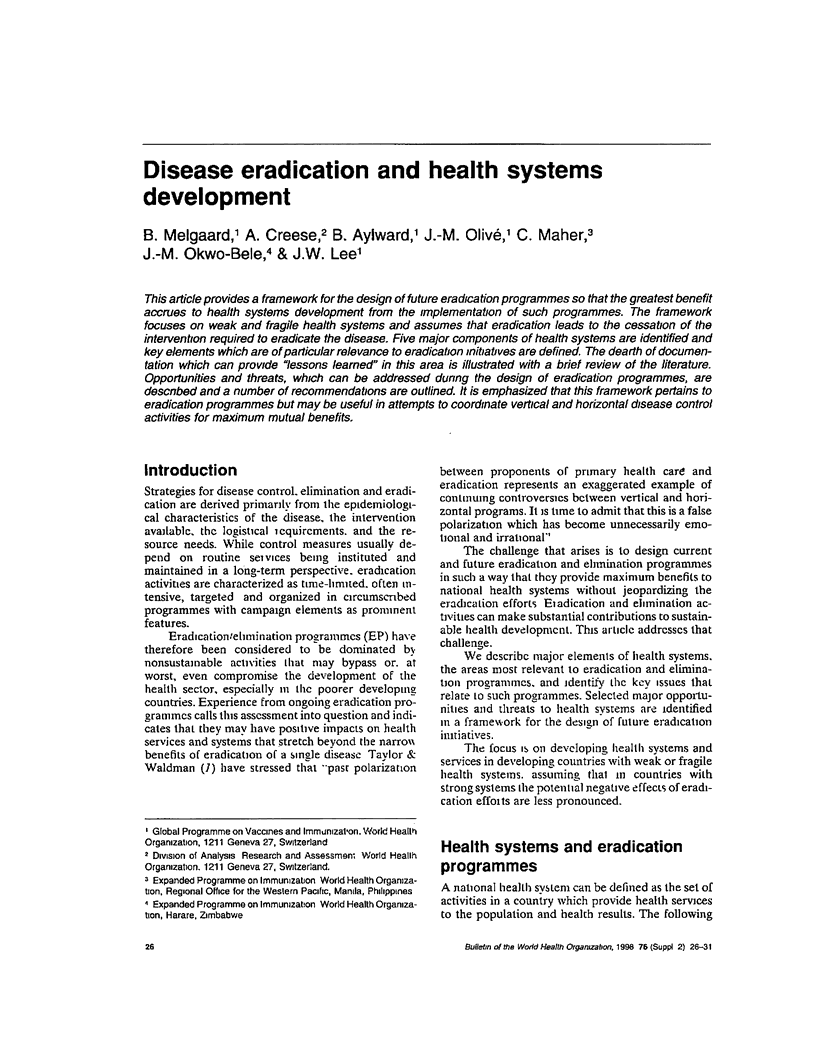
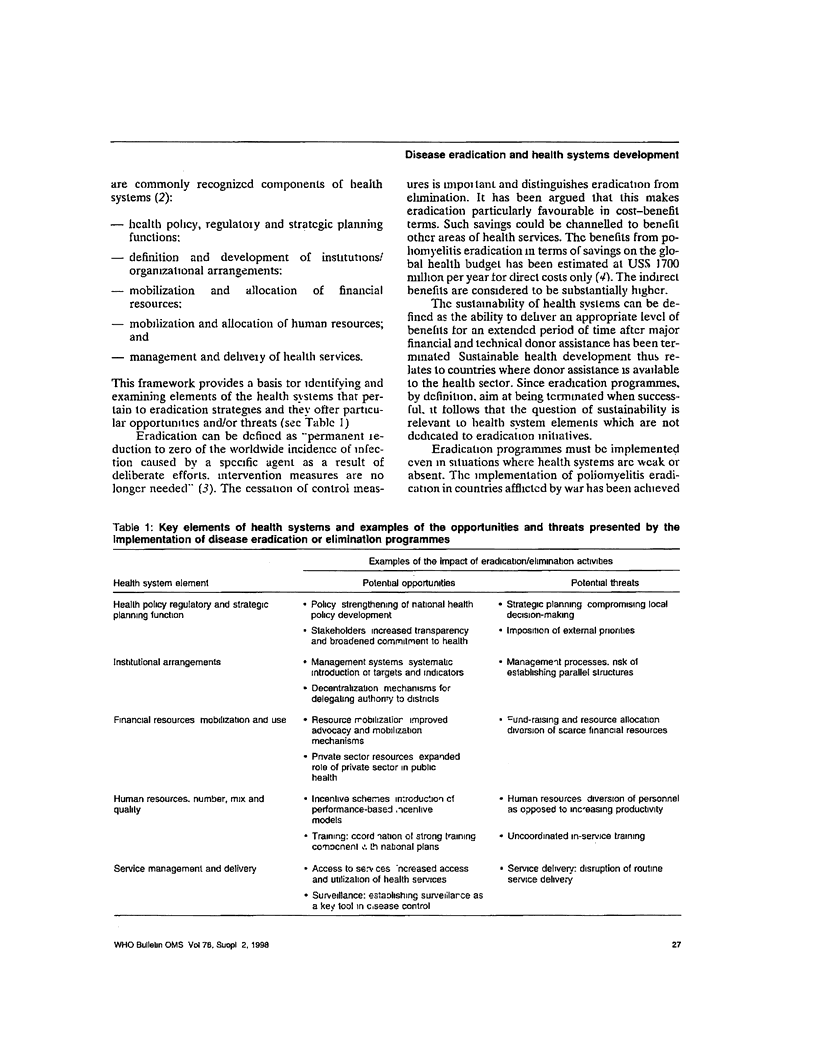
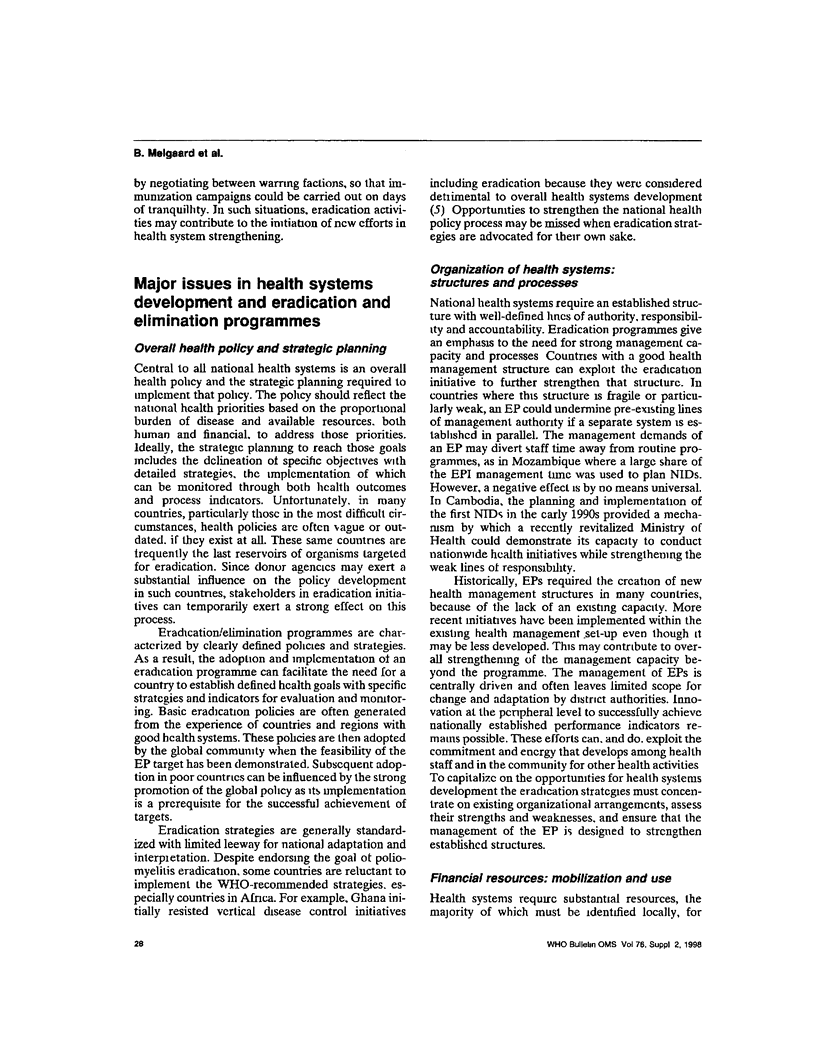
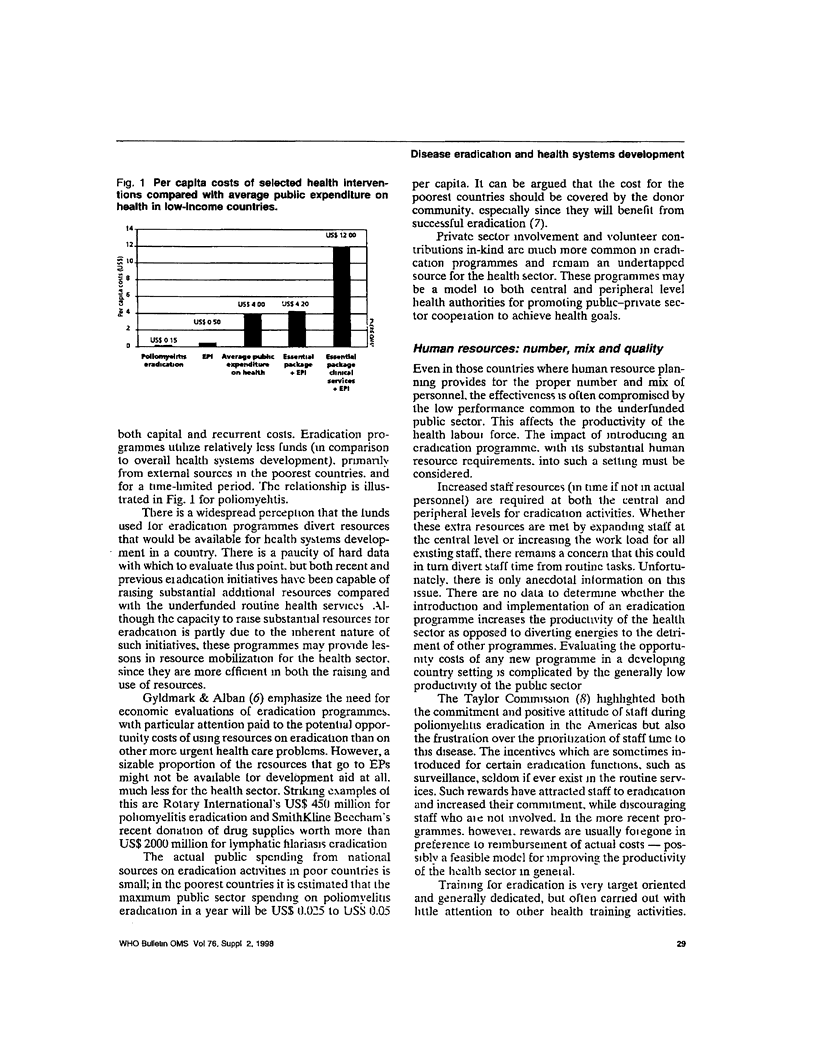
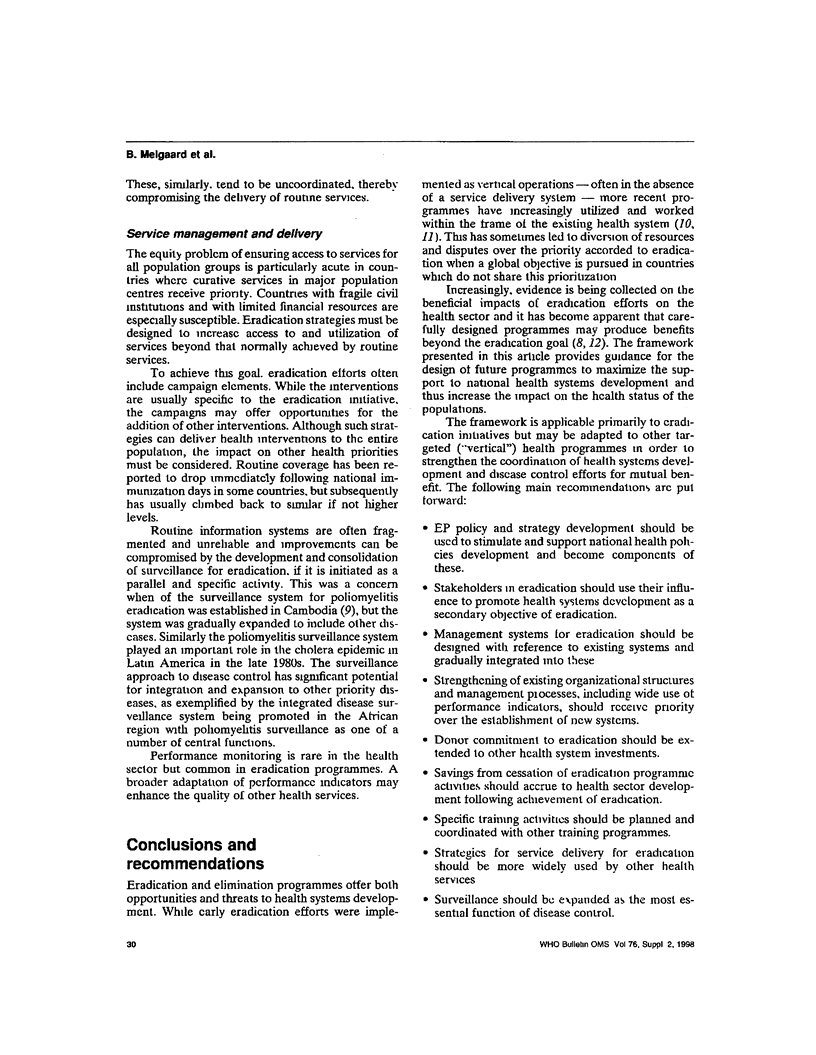
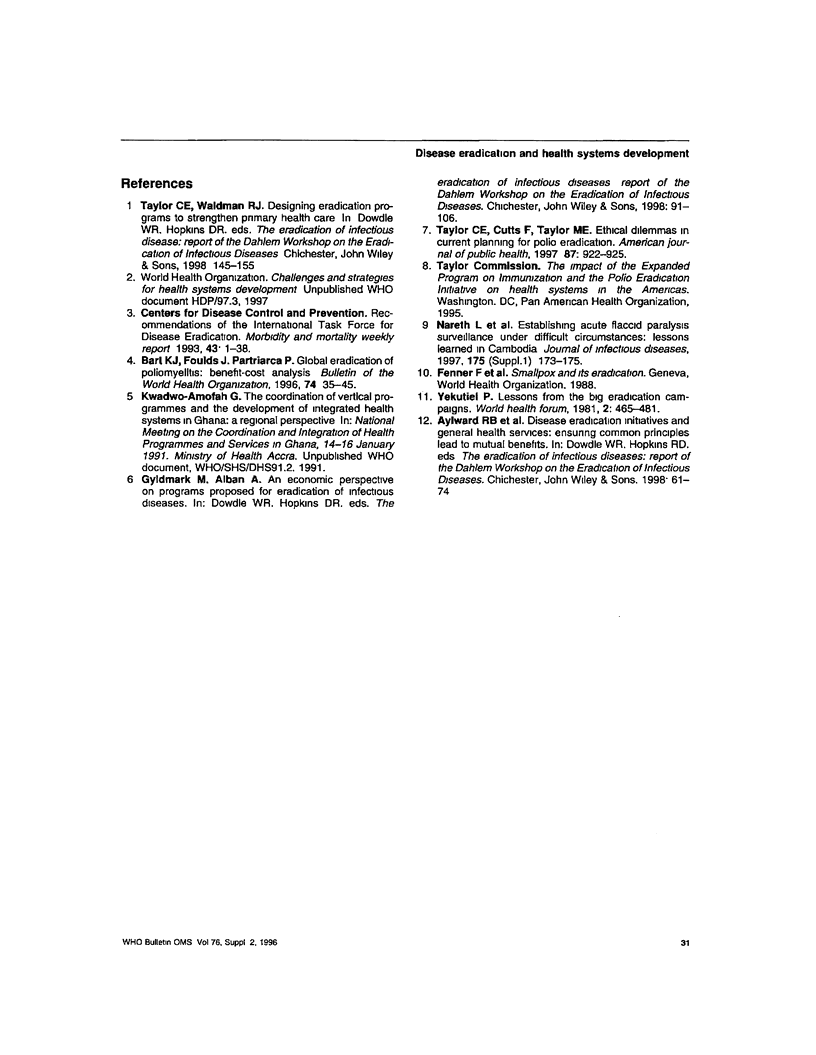
Selected References
These references are in PubMed. This may not be the complete list of references from this article.
- Bart K. J., Foulds J., Patriarca P. Global eradication of poliomyelitis: benefit-cost analysis. Bull World Health Organ. 1996;74(1):35–45. [PMC free article] [PubMed] [Google Scholar]
- Taylor C. E., Cutts F., Taylor M. E. Ethical dilemmas in current planning for polio eradication. Am J Public Health. 1997 Jun;87(6):922–925. doi: 10.2105/ajph.87.6.922. [DOI] [PMC free article] [PubMed] [Google Scholar]


